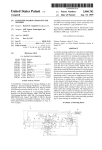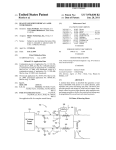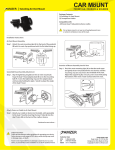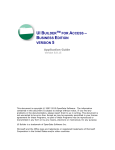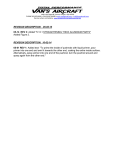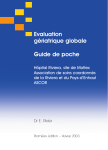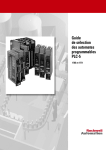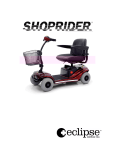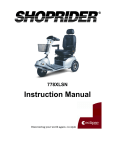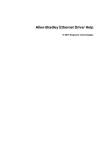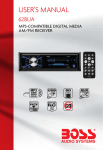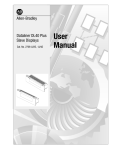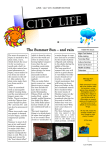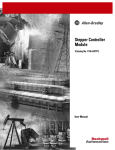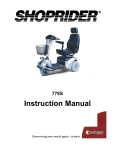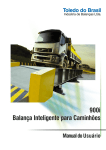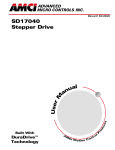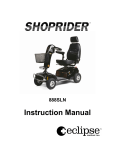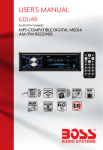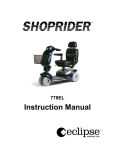Download Process that uses liquid nitrogen for displacing air from a container
Transcript
US006105341A United States Patent [19] [11] Patent Number: Campbell [45] Date of Patent: [54] PROCESS THAT USES LIQUID NITROGEN FOR DISPLACING AIR FROM A CONTAINER PRIOR TO SEAMING A LID TO THE CONTAINER Inventor: Robert H. Campbell, Brookhaven, Pa. Assignee: ABC Seamer Technologies, Inc., Aston, Pa. OTHER PUBLICATIONS “Cost Effective Conversion from Vacuum Packing to Gas Flushing,” Jescorp Packaging Machinery & Electronics, copyright dated 1996, downloaded from Jescorp website (www.jescorp.com/canco.html) on Sep. 8, 1997, 3 pages. Product catalog description of 3 can seaming machines: Irregular Can Seaming Machine—BMT: SPS 200; Round Can Seaming Machine—SRS 200; Can Seaming Machine (www.optimal—india.com/bubber/catalog.htm) on Sep. 8, Nov. 20, 1998 1977, 3 pages. International Search Report for PCT/US98/27254 mailed Apr. 28, 1999, 6 pages. Related US. Application Data Division of application No. 08/996,874, Dec. 23, 1997, Pat. NO. 5,860,782. Int. Cl.7 ........................... .. B21D 51/26; B65B 7/28; B65B 31/04; B65B 55/18; B65B 55/19 US. Cl. ................................. .. 53/432; 53/98; 53/239; 53/402; 53/431; 53/471; 53/488; 53/511; Assembly view (vertical cross—section thru valves and hoist) of CAN CO 117 seaming machine, Canco, Greenwich, Con necticut, date unknown, 1 page (numbered —53—). Catalog pages for Step Motor Drivers. Introduction to Step Motor Drivers; SD8055 Microstep Motor Driver; SD8055 Installation. AMCI, pp. 4 and 10—17. 413/6; 413/27; 413/31 (List continued on neXt page.) Field of Search ............................ .. 53/432, 433, 511, 53/510, 111 R, 400—403, 431, 471, 486, 488, 75, 97, 98, 88, 89, 86, 79, 239; 413/2—7, 26, 27, 31, 40, 41, 43 References Cited [56] Aug. 22, 2000 SRS:200:SB with Control Unit BMT: P—200 for Round Cans, downloaded from Bubber Machine Tools website Appl. No.: 09/196,810 Filed: 6,105,341 Primary Examiner—James F. Coan Attorney, Agent, or Firm—Akin, Gump, Strauss, Hauer & Feld, L.L.P. [57] ABSTRACT A process is provided for displacing air from containers U.S. PATENT DOCUMENTS prior to seaming a lid to a container. In the process, a 635,608 648,037 1,862,290 10/1899 Steward . 4/1900 Lef?er . 6/1932 Anderson . 2,150,002 3/1939 Link. 2,216,082 9/1940 Kronquest et al. . container body is ?lled with contents and is then injected with liquid nitrogen. A lid is immediately placed on the container body, and a biasing force is immediately applied against the lid to maintain the lid on the liquid nitrogen ?lled container bodies until the container body reaches the seam ing mechanism. The biasing force is suf?cient to allow a 2,391,684 12/1945 DieZel. 3,033,264 4,633,553 5/1962 Hendrikson . 1/1987 Chronis et al. . 4,662,153 5/1987 Wozniak. 4,961,300 5,228,274 portion of nitrogen gas from vaporization of the liquid nitrogen to escape from the container body, and to allow air originally present in the container body to escape from the 10/1990 Mihara et al. . 7/1993 De Man et al. ........................ .. 53/510 5,251,424 10/1993 Zenger et al. . 5,271,207 5,358,369 5,584,634 12/1993 Epstein et al. .......................... .. 53/432 10/1994 Katou et al. . 12/1996 Okabe et a1. ......................... .. 53/75 X container body, while preventing surrounding air from enter ing the container body. 8 Claims, 13 Drawing Sheets 82 OPERATOR TERMINAL 6,105,341 Page 2 OTHER PUBLICATIONS Catalog for ET Series Electro—Thrust Electric Cylinder Catalog, 1890, Parker Motion & Control, Parker Hanni?n Corporation, Automation Actuator Division, Wadsworth, Ohio, Jul. 1994. SLC SOOTM Family of Small Programmable Controllers, System OvervieW catalog, Publication 1747—2.30, Allen—Bradley, Milwaukee, Wisconsin, Aug. 1993. User’s Manual for Allen—Bradley Stepper Controller Mod ule, Catalog No. 1746—HSTP1, Allen—Bradley, MilWaukee, Wisconsin, Jun. 1996. Brochure for PanelvieWTM 550 Operator Terminals/Panel builderTM 550 SoftWare, Publication 2711—1.3, Allen—Bra dley, MilWaukee, Wisconsin, Jan. 1994. “Double Seam Terminology”, date unknoWn, 1 page. U.S. Patent mm Aug. 22,2000 A Sheet 1 0f 13 6,105,341 U.S. Patent Aug. 22,2000 Sheet 2 0f 13 6,105,341 Fig. 2 3 FROM CONTROLLER 54 42 U.S. Patent Aug. 22,2000 Sheet 3 0f 13 6,105,341 U.S. Patent Aug. 22, 2000 CONTRQLE F68ROM 454/42 Sheet 4 0f 13 6,105,341 U.S. Patent Aug. 22,2000 wow Sheet 13 0f 13 6,105,341 V @.mE 6,105,341 1 2 PROCESS THAT USES LIQUID NITROGEN FOR DISPLACING AIR FROM A CONTAINER PRIOR TO SEAMING A LID TO THE CONTAINER ?rst drive may include a servomotor and a linear actuator. The servomotor receives control data related to the desired position of the seaming roller With respect to the circum ferential edge of the container body, and the container lid. The linear actuator translates a servomotor output to cause movement of the seaming roller. CROSS REFERENCE TO RELATED APPLICATION This application is a division of application Ser. No. 08/996,874, ?led Dec. 23, 1997, now US. Pat. No. 5,860, 782, originally entitled “CONTAINER SEAMING APPA RATUS AND METHODS,” the entire disclosure of Which is Another embodiment of the invention provides a con tainer seaming machine for performing a seaming operation 10 and a pressure sensor. The seaming chuck holds the lid ?rmly against an end of the container body during a seaming operation. The other end of the container body is placed on incorporated herein by reference. BACKGROUND OF THE INVENTION on a container body and lid by using a seaming roller. The machine includes a seaming chuck, a base surface, a drive the base surface. The drive causes the base surface to move 15 toWard the seaming chuck so that the end of the container The present invention-relates generally to seaming body and the lid are held ?rmly against the seaming chuck machines. A seaming machine is used to seam a lid to a contents-?lled container body so as to form a sealed con performing the seaming operation. The end of the container and so that the container body and lid are in position for tainer. The seaming machine typically has tWo seaming rollers associated With the seaming machine to form a sanitary seam, also called a double seam, betWeen the container body and the lid. Conventional seaming rollers are positioned by mechani cal cams controlled by mechanical drives, gear trains and the like, all of Which are carefully coordinated and interlinked 20 associated With an output of the drive. The pressure sensor 25 With a drive that rotates the container body With respect to the seaming rollers. Due to the complex linkages uses in conventional seaming machines and reliance on primarily mechanical drives, it is very time-consuming to make adjustments to a seaming machine When the machine 30 force is immediately applied against the lid to maintain the lid on the liquid nitrogen ?lled container bodies until the 35 container. As the liquid nitrogen vaporiZes, the resultant nitrogen gas drives out the air. This process requires precise timing to ensure that substantially all of the liquid nitrogen container body reaches the seaming mechanism. The biasing force is suf?cient to alloW a portion of nitrogen gas from virtue of its inherent design, is also limited in the range of different container siZes that it can be adjusted to handle. When packaging goods Which spoil due to eXposure to air, Another embodiment of the invention provides a process to displace air from containers prior to seaming a lid to a container. In the process, a container body is ?lled With contents and is then injected With liquid nitrogen. A lid is immediately placed on the container body, and a biasing different container siZe is used. The changeover results in the air is removed from the container before the lid is sealed thereon. One process for removing the air and Which avoids the necessity to seam under a vacuum, is to inject liquid nitrogen into the container before the lid is seamed onto the measures the force eXerted betWeen the container body and the lid. The measured force is used to determine the ?nal position of the drive. becomes out of tolerance, or if a different siZe container is used. For example, it may take as long as an entire Workday, as Well as the swapping of parts, to change a machine if a lost production time and requires skilled, hard to ?nd, machine operators. A conventional seaming machine, by body and the lid eXert a force against each other Which is determined by the ?nal position of the drive. In this manner, the ?nal position of the drive is adjustable so that the drive may cause varying degrees of force to be eXerted betWeen the container body and the lid. The pressure sensor is vaporiZation of the liquid nitrogen to escape from the container body, and to alloW air originally present in the container body to escape from the container body, While 40 preventing surrounding air from entering the container body. The biasing force is applied for a period of time Which is suf?cient to alloW substantially all of the liquid nitrogen to vaporiZe, and thereby displace substantially all of the air originally present in the container body. The biasing force 45 may be applied by a spring loaded rail. An apparatus for performing this process is also provided. vaporiZes and that no air leaks back into the container before the lid is seamed on. It is very dif?cult to achieve the precise BRIEF DESCRIPTION OF THE DRAWINGS timing. The foregoing summary, as Well as the folloWing detailed description of preferred embodiments of the invention, Will Accordingly, there is a need for seaming machines and processes Which overcome the problems discussed above. be better understood When read in conjunction With the appended draWings. For the purpose of illustrating the BRIEF SUMMARY OF THE INVENTION A container seaming machine is provided Which includes 55 a seaming chuck, a seaming roller and a ?rst and a second drive. The seaming chuck holds a lid ?rmly against an end of a container body during a seaming operation. The ?rst drive is connected to the seaming roller and positions the seaming roller With respect to a circumferential edge of the lid. The second drive causes rotation of the seaming chuck, thereby causing rotation of the container body and container lid. The ?rst drive and the second drive are independently controllable from each other. A programmable controller provides the separate control and coordination of the tWo drives. A method of seaming a lid to a container body by using the container seaming machine is also provided. The invention, there are shoWn in the draWings embodiments Which are presently preferred. It should be understood, hoWever, that the invention is not limited to the precise arrangements and instrumentalities shoWn. In the draWings: FIG. 1 is a schematic illustration of an assembly line process Which uses a container seaming machine in accor 60 dance With the present invention; FIG. 2 is an enlarged front elevational vieW of a portion of the seaming machine of FIG. 1; FIG. 3 is a top plan vieW of a seaming roller drive for the seaming machine of FIG. 2, taken along line 3—3 of FIG. 65 2; FIG. 4 is an elevation vieW of the seaming roller drive of FIG. 3, taken along line 4—4 of FIG. 3; 6,105,341 3 4 FIGS. 5A—5H are sample display screens and their respective screen summary reports for a programmable controller Which is shoWn in FIG. 1 and Which controls the end of the container body. A ?rst mechanical drive positions the tWo seaming rollers With respect to a circumferential edge of the lid. A second drive on the seaming machine rotates the seaming roller With respect to the chuck, con tainer body and container lid. There is typically one motor Which has tWo poWer takeoffs, one for each of the drives. In seaming machine of FIG. 1; and FIG. 6 is a schematic illustration of an assembly line process for removing air from containers prior to seaming the containers, in accordance With the present invention. DETAILED DESCRIPTION OF THE INVENTION one conventional con?guration, the chuck, container body and lid remain stationary, and the second drive rotates the seaming roller around the container body and lid. In another 10 conventional con?guration, a second drive on the seaming machine rotates the chuck, Which, in turn, rotates the con In the draWings, the same reference numerals are tainer body and lid. There are typically tWo seaming rollers employed for designating the same elements throughout the on a seaming machine used for food products. The tWo seaming rollers form a sanitary seam, called a double seam, several ?gures. FIG. 1 shoWs an assembly line 10 for moving content ?lled container bodies 12 through a seaming station 14 15 Which seams lids 16 to the container bodies 12 to form lidded, sealed containers 18. The assembly line 10 includes a conveyor 20 for moving the container bodies 12 and the seamed containers 18. The seaming station 14 de?nes a vacuum chamber 22 having a seaming machine 24 therein. The individual components of the seaming machine 24 are described in detail beloW. The container seaming machine 24 described herein seams lids to container bodies under a vacuum state. To accomplish this task, the assembly line 10 further includes not described in detail herein. The shafts 36 and 38 are described in detail beloW. While the seaming machine 24 has tWo seaming rollers, the present invention is equally appli 25 an inlet or entrance feed valve 26 and a discharge or eXit feed cal cams controlled by mechanical drives, gear trains and the like, all of Which are carefully coordinated and interlinked With the second drive that rotates the container body With respect to the seaming rollers. To change the settings of a entrance feed valve 26 introduces the container bodies 12 to the vacuum chamber 22 of the seaming station 14. Vacuum begins to be pulled on the container bodies 12 as the conventional seaming machine, such as to accommodate a container bodies 12 pass through the feed valve 26. The eXit feed valve 28 removes the lidded, sealed containers 18 from different container diameter or to correct a “seam out-of 35 The region of FIG. 1 labeled as 30 is a vacuum region, the highest vacuum occurring in the vacuum chamber 22. Thus, While not illustrated in FIG. 1, the outlet of the entrance feed valve 26 and the inlet of the eXit feed valve 28 are in ?uid tolerance” condition, the entire machine must be shut doWn and a very time-consuming resetting procedure must be performed. A changeover to a different container diameter may take several hours. Furthermore, conventional seaming machines typically require thousands of dollars of change parts to handle a different container siZes. communication With each other and are sealed from the One important feature of the present invention is that the seaming rollers 32 and 34 are positioned by drives that are surrounding environment. An integrated seaming mecha nism Which has an entrance feed valve 26, a seaming station 14 under vacuum, and an eXit feed valve 28 is conventional, and thus is not described in detail herein. One eXample of such a mechanism is a CAN CO 117 seaming machine, made cable to a seaming machine Which has only one seaming roller. Conventional seaming rollers are positioned by mechani valve 28, each of Which have respective inlets and outlets in ?uid communication With the seaming station 14. The the seaming station 14. betWeen the container body and the lid. The ?rst roller begins to roll the lid and the container body, forming a ?rst operation roll seam, and the second roller completes the seam, forming the second operation roll seam. The resultant seam is airtight. The seaming machine 24 has tWo such seaming rollers 32 and 34 linked to respective seaming roll shafts 36 and 38. The rollers 32 and 34 are of conventional design, and thus independently controllable from, or independent of, the drive that rotates the seaming rollers 32 and 34 With respect to a circumferential edge of the lid 16 to be seamed to the 45 by Canco, GreenWich, Conn. The feed valves 26 and 28 in container body 12. That is, the tWo drives are separate, such a mechanism use turrets to move the container bodies mechanically unlinked motive means. There are no mechanical cams. Adjustments may be made to one drive 12 from the valve inlets to the valve outlets. The feed valves 26 and 28 may be similar to the feed valves in the Canco machine, or they may be similar to feed valves of other types Without affecting the other. In this manner, the seaming roller drive (or seaming roller drives if there are tWo seaming rollers) may be positioned more easily, and Without having of conventional vacuum-operated seaming mechanisms. to shut doWn the machine or adjust any gears or the like seams under vacuum, the vacuum environment is not a Within the seaming machine. The seaming roller drives may even be adjusted While the seaming machine is in operation necessary feature of the invention, and the seaming may (i.e., “on-the-?y”) and Without having to stop the seaming While the disclosed embodiment of the present invention occur at atmospheric pressure. Thus, the vacuum chamber 55 machine at all. Furthermore, different container siZes may be run through the same seaming machine With a minimum of 22 is optional, the feed valve 26 need not necessarily draW eXtra tooling. a vacuum, and the outlet of the feed valve 26 and the inlet of feed valve 28 need not necessarily be in ?uid communi The seaming roller drives must be coordinated With the drive that rotates the seaming rollers 32 and 34 With respect cation to maintain a vacuum. A less complex feed process may also be used in place of the feed valves 26 and 28 to deliver container bodies 12 to, and remove lidded containers to a circumferential edge of the lid 16 to be seamed to the container body 12. In the present invention, this coordina tion is performed by a controller, preferably, a program 18 from, the seaming station 14. mable controller Which eXecutes a programmable logic Seaming machines use seaming heads Which have seam ing rolls or seaming rollers attached thereto for performing the seaming function. In one type of seaming machine, a seaming chuck holds a lid ?rmly against a top end of a container body so that the lid is held in contact With the top 65 control (PLC) program. The programmable controller pro vides signi?cantly more ?exibility than the conventional approach of mechanically synchroniZing seaming machine drives. 6,105,341 6 5 Referring again to FIG. 1, the seaming machine 24 and 34 for the particular container height, or it Would be necessary to independently move the seaming rollers 32 and 34 in a vertical direction using drives similar to the drive 50. The lid 16 is placed on the top end of the container body includes a ?rst seaming roller drive 40 and a second seaming roller drive 42. The ?rst seaming roller drive 40 is linked via the roll shaft 36 to the seaming roller 32, and the second seaming roller drive 42 is linked via the roll shaft 38 to the 12 before the tWo items enter the feed valve 26. The mechanism for placing the lids 16 on the succession of container bodies 12 is not shoWn in FIG. 1. In the embodi seaming roller 34. The drives 40 and 42 adjustably position the circumferential edge of the respective seaming rollers 32 and 34 toWard and aWay from a center aXis Acb of the ment of the invention Which does not seam in a vacuum container body 12, thereby positioning the seaming rollers environment, the lid 16 is placed on the container body 12 32 and 34 With respect to the circumferential edge of the lid 16 to perform a seaming operation. The seaming machine 24 is of the type Wherein a seaming chuck holds the lid 16 ?rmly against the top end of the container body during the seaming operation, and a drive rotates the chuck, thereby causing rotation of the container body 12 and container lid 16 (and the chuck) in unison. The before the tWo items are placed on the base plate 48. To alloW for independent controlling of the respective 15 seaming chuck and drive are schematically shoWn and are labeled as 44 and 46, respectively. The present invention may alternatively be used With a seaming machine 24 Wherein a chuck, container body and lid remain stationary, program, shoWn as a ladder diagram, appears in the Appen diX. Based on the program, control data is output from the controller 54 and sent to the respective drives 40, 42, 46 and 50. One purpose of the programmable controller 54 is to appropriately position the seaming rollers 32 and 34 With respect to the circumferential edge of the lid 16 during and a drive rotates the seaming roller around the container body and lid. In either con?guration, the ?rst and second seaming roller drives 40 and 42 are independently control lable from the drive Which rotates the seaming rollers 40 and 42 With respect to the chuck. In the disclosed eXample of the present invention, the ?rst and second seaming roller drives drives, the assembly line 10 preferably includes a program mable controller 54 Which eXecutes a programmable logic control (PLC) program stored therein. A sample PLC rotation of the container body 12, lid 16 and chuck 44 so as 25 40 and 42 are thus independently controllable from the drive to perform a seaming operation. Another purpose of the programmable controller 54 is to control the base plate drive 50 so that the base plate 48 is lifted to the appropriate ?nal position. The program thus coordinates the seaming opera tion in accordance With the stored program and thereby replaces conventional mechanical linkages Which perform 46 that rotates the chuck 44, as described in more detail hereafter. The seaming machine 24 also has a vertically movable base surface or base plate 48 for receiving the container similar functions. The programmable controller 54 includes an operator body 12 and for lifting it toWards the chuck 44. The base plate 48 is lifted by a base plate drive 50 Which is linked via values to be entered into the program, and a display 58 for shaft 52 to the base plate 48. In use, a container body 12 and an unattached lid 16 resting on the top end of the container body 12 are placed on the base plate 48, and the container body 12 and unseamed lid 16 move toWard the chuck 44 a input panel 56 for alloWing at least some of the operating interfacing With the operator during inputting and for com municating operating status. The programmable controller 35 predetermined vertical distance until the top end of the container body 12 and lid 16 are held ?rmly against the chuck 44. The top end of the container body 12 and the lid 16 thus eXert a force against each other Which is determined by the ?nal position of the base plate 48, as determined by the action of the drive 50. The container body 12, lid 16 and chuck 44 remain in the ?nal position during the seaming operation. After the seaming operation is completed, the 45 54 may optionally receive input data from automated mea suring devices or sensors placed along the assembly line 10. For example, there may be a container body diameter sensor 60 and a container height sensor 62 located prior to the seaming station 14. Data from these sensors may be used in place of an operator input values or preset values to set parameters of the program Which Will control the drives. In particular, the diameter sensor 60 may be used to control the roller drives 40 and 42 and the chuck drive 46, Whereas the height sensor 62 may be used to control the base plate drive 50. base plate drive 50 moves the base plate 48 doWnWard to Roller drives 40 and 42 may periodically require ?ne alloW the lidded container 18 to be released and to alloW a position adjustments due to Wear at contact surfaces or due neW container body 12 to be placed on the base plate 48. The to play in linkage components. An additional feedback base plate drive 50 is independently controllable from the sensor 64 may be located after the seaming station 14 to roller drives 40 and 42, and from the chuck drive 46, as obtain data regarding the quality of the seam (e.g., its Width, body hook and cover hook) of seamed containers 18. The feedback data may be analyZed, compared to desired values, and used to make the ?ne position adjustments to the appropriate drives. Seamed containers may also be manually described in more detail hereafter. In an alternative embodiment of the invention, the base plate 48 is ?Xed, and the chuck 44 moves vertically doWn Ward to hold the container body 12 and lid 16 ?rmly together against the base plate 48. In this alternative embodiment, the 55 drive 50 Would be linked via the shaft 52 to the chuck 44. In the preferred embodiment of the invention shoWn in the ally entered into the operator input panel 56. Each production run of containers requires speci?c drive instructions based upon the container siZe (e.g., diameter ?gures, the seaming rollers 32 and 34 do not move vertically. Accordingly, When a container body is properly positioned in the seaming machine 24, it is only necessary to move the seaming rollers 32 and 34 toWard the center aXis of a container body 12 to properly position the rollers 32 and 34 to perform a seaming operation. HoWever, if the ?Xed base plate alternative embodiment is used, it Would be necessary to either link the seaming rollers 32 and 34 (and related parts) together With the vertically movable chuck 44 to obtain the proper vertical position for the seaming rollers 32 eXamined by quality control personnel, and based upon visual inspection, ?ne position adjustments may be manu and height), and desired qualities of the seam (e.g., Width, body hook and cover hook). These factors are processed by the programmable controller 54 and used to create a set of instructions. The set of instructions are used to output drive 65 control data for each of the seaming machine drives. For eXample, a container body having a three inch diameter and a siX inch height requires a ?rst set of instructions, including position instructions for the roller drives 40 and 42 (to 6,105,341 7 8 appropriately position the seaming rollers 32 and 34), rota 84 is ?xed to a housing 86 of the seaming machine 24. The tion instructions for the chuck drive 46 and ?nal position instructions for the base plate drive 50, Whereas a container body having a tWo inch diameter and a four inch height requires a second set of instructions that Will be completely drive 42 includes a servomotor 68 and a linear actuator 70. The servomotor 68 has an input for receiving control data from the programmable controller 54 related to the desired position of the seaming roller 34 With respect to the circum ferential edge of the container body 12 and the container lid 16, and an output. The output of the servomotor 68 is different from the ?rst set of instructions. The set of instructions may be initiated at the start of a production run of similar containers to be seamed in the same manner. Alternatively, the set of instructions may be modi?ed during the production run based upon feedback 10 connected to the linear actuator 70 Which translates the servomotor output. The linear actuator 70 has an output shaft 72 Which is pivotally connected to one end of a linking plate 74. The other end of the linking plate 74 is ?xedly secured to the top surface of the roll shaft 38. Another linking plate data from the sensor 64. Another alternative embodiment uses the diameter and/or height sensors 60 and 62 to de?ne a neW set of instructions “on the ?y” Without having to stop the seaming machine 24. In this manner, a single production run may include containers of different siZes and/or seam 15 88 is ?xedly secured at one end to the bottom surface of the roll shaft 38 and at the other end to the seaming roller 34. In this manner, movement of the output shaft 72 out of the linear actuator 70 causes rotation of the roll shaft 38 in a types. counterclockWise direction, Which, in turn, causes the seam ing roller 34 to move toWard the center axis Acb of the The container diameter may also be used to automatically select “on-the-?y” the appropriate chuck 44 from a plurality of chucks for automatic mounting to a seaming machine. The seaming machine 24 shoWn in the ?gures does not have this capability, although it could be provided, if desired. In container body 12. FIG. 2 shoWs the seaming roller 34 in contact With the circumferential edge of the lid 16 and thus in the position for performing a seaming operation. this manner, a very Wide range of container diameters can be LikeWise, movement of the output shaft 72 into the linear processed continuously by the same seaming machine With out requiring any doWntime for manually changing chucks. clockWise direction, Which, in turn, causes the seaming Since the programmable controller 54 has complete con actuator 70 causes rotation of the roll shaft 38 in the 25 trol over the drive 46, and because the drive 46 is not roller 34 rotates about its center axis in a conventional mechanically linked to the drives 40 and 42, the direction of the seaming process can be selected. In the seaming machine 24 of FIG. 1, this means that the container body 12 can be spun in reverse during a seaming operation, if desired, manner. To obtain precise control of the drive 42, the servomotor 68 is preferably a stepper motor Which accepts control data from a programmable controller, and the linear actuator 70 is preferably a ball screW mechanism. Alternatively, the linear actuator 70 may be a pneumatic cylinder. Such thereby maximiZing the strength of certain composite con tainers depending upon hoW the composite material is Wound (e.g., clockWise or counterclockWise around a mandrel). Such composite containers Would otherWise be Weakened by a forWard rotation during a seaming operation. servomotor and linear actuator combinations 68 and 70 are 35 Poor seams are sometimes the result of insuf?cient or With a remote operator terminal 82. This alloWs an operator at a remote site to operate the seaming machine 48, program excessive force being applied betWeen the container body 12 and the lid 16 during the seaming operation. Also, When the or reprogram the controller 54, and to remotely perform container bodies 12 are made of cardboard or a soft poly meric material, excessive force may cause crushing or diagnostics. To simplify the subsequent explanation of the invention, the seaming machine 24 is described With respect to only a 45 34 and its corresponding drive 42. The remaining discussion of these components is equally applicable to the seaming roller 32 and its drive 40. Also, the position coordination of tWo seaming rollers With respect to each other Which is the output shaft 72 of the linear actuator 70 associated With the drive 50 is directly connected to the shaft 52 Which extends from the base plate 48. The connection is along a common vertical axis. In FIG. 1, the shafts 52 and 72 appear described in detail herein. HoWever, the process generally Works as folloWs: as one continuous shaft, even though there are actually tWo 55 in contact With the lid. of the base plate 48. As a result, the drive 50 is program mable to cause varying degrees of force to be exerted betWeen the container body 12 and the lid 16. Data obtained into contact With the lid to complete the seam. about its center axis Am. The roll shaft 38 rotates Within a bushing (not shoWn) of a shaft housing 84. The shaft housing shafts linked together. Alternatively, the shaft 52 may be eliminated, and the linear actuator’s output shaft 72 may be directly connected to the base plate 48. This con?guration alloWs for precise, computer-controlled height adjustments (2) Next, the ?rst roller is moved aWay from (and out of contact With) the lid, and the second roller is brought (3) When the seam is completed, the second roller is moved aWay from the lid. FIGS. 2—4 shoW detailed vieWs of one preferred embodi ment of the drive 42 and its linkages to the seaming roller 34. Referring to FIG. 2—4, the drive 42 is linked via the roll shaft 38 to the seaming roller 34. The roll shaft 38 is rotatable bulging of the seamed container sideWalls. All of these problems can be minimiZed or eliminated by the present invention. Referring to FIG. 1, the drive 50 associated With the base plate 48 is preferably similar to the drive 42, and thus also includes a servomotor 68 and a linear actuator 70. HoWever, required to create a double seam is Well knoWn and thus not (1) The ?rst roller is brought into contact With the lid, and begins to roll the lid and the container body. While the ?rst roller is contacting the lid, the second roller is not Well-knoWn to those skilled in the art. Accordingly, further description thereof is omitted for purposes of brevity and convenience only and is not limiting. The programmable controller 54 also includes a remote communication module 80 for bidirectional communication single seaming roller and drive, particularly, seaming roller roller 34 to move aWay from the center axis Acb of the container body 12. During a seaming operation, the seaming from the feedback sensor 64 may also be used to make ?ne adjustments to the ?nal position of the base plate 48. To obtain even better control of the force exerted betWeen the container body 12 and the lid 16, a pressure sensor 76 65 may be associated Within the drive 50 so that an immediate indication of the force may be detected and used for feed back control. In this scheme, a desired force is preset by the 6,105,341 9 10 U0 Analog Module—NIO4I and NIO4V Operator Terminal—2711 PanelVieW 550 Operator Terminal, Panelbuilder 550 SoftWare programmable controller 54. In operation, the program mable controller 54 sends instruction data to the drive 50 to cause movement of the base plate 48 toWard the chuck 44. The output of the pressure sensor 76 is continuously trans Remote communication module—1746-BAS Basic Mod mitted to the programmable controller 54 and compared to the desired force. The comparison data is used to set the ?nal position of the drive 50. ule or 1747-KE Interface Module The 1746-BAS Basic Module provides limited remote capability. The 1747-KE Interface Module provides full The pressure sensor 76 may be a strain gage attached to remote capability so that all of the functions of the program the linear actuator’s output shaft 72. Alternatively, the mable controller 54, including the functions of adjusting pressure sensor 76 may be an air pressure sensor if the linear 10 drive instructions based on sensed container types and seam actuator 70 is a pneumatic cylinder. feedback data, can be performed remotely. Controller-driven drives provide signi?cant advantages for the seaming machine 24, some of Which are discussed beloW. It is sometimes desirable to spot clinch containers during A sample ladder diagram for implementing seaming machine control via the Stepper Controller Module is shoWn 15 a seaming operation. Spot clinching is performed on a 1. Con?gure the Stepper Controller Modules. 2. Start, stop and jog the seaming machine 24 (sends seaming machine by intermittently engaging and disengag ing the seaming rollers from a seaming position during rotation of the seaming rollers With respect to the chuck, container body and lid. It is dif?cult, if not impossible, to use a conventional seaming machine for both spot clinching and complete airtight seaming. In one knoWn technique, a rail substation is used When spot clinching With a conventional seaming machine. The seaming machine 24 is easily adaptable to spot 25 complete seaming operations. To perform spot clinching, it roller engaging and disengaging instructions during rotation 30 the seaming roller 34 is controlled independent of the seaming chuck drive 46, it is not necessary to make any 35 spot clinching, to miX spot clinching and complete seaming operations in the same machine, or to perform spot clinching folloWed by complete seaming on the same container. REFERRED COMPONENTS OF PROGRAMMABLE CONTROLLER 54 40 45 These display screens may be generated using a PV550 Keypad and Touch Screen With softWare version FRN 200-2XX, available as Allen-Bradley Catalog Part no. 2711 B5A3. COMPONENTS OF DRIVES 40, 42, 50 Electric Cylinder, available from Parker Motion & Control, Parker Hanni?n Corporation, Automation Actuator Division, WadsWorth, Ohio. Each of these drives have a ball One preferred embodiment of the invention requires a total of ?ve container revolutions to seam a container, 21/2 revolutions for the ?rst (initial) seam and 21/2 revolutions for the second (?nal) seam. The precise number of revolutions depends upon a myriad of factors, including the desired 55 properties of the containers and the seams. LIQUID NITROGEN INJECTION Many types of containers are seamed under vacuum so SLC 500 Modular Controller With an SLC 5/03 processor. 60 that the container interiors have substantially no air after they are seamed. In this manner, the container contents cannot become spoiled by eXposure to oXygen in air trapped in the sealed container. Nuts are one product Which is easily 1746-IV16 120/240 VAC, 16 output Discrete Output Module— Catalog No. 1746-OW16 VAC/VDC Relay, 16 output Discrete Output Module— Catalog No. 1746-OW16 tive screen summary reports are shoWn in FIGS. 5A—5H. ROTATIONS FOR SEAMING OPERATION 50 Catalog No. 1746-HSTP1. Alternatively, one or three or Memory Module—Catalog No. 1747-M11 12K Words PoWer Supply—Catalog No. 1746-P2 24 VDC, 16 input Discrete Input Module—Catalog No. loWered for cleaning and maintenance. Referring to function 2 above, the chuck drive 46 may also be controlled by a stepper motor Which Would require more precise control signals than poWer on/off signals used in the present embodiment of the invention. Sample PanelVieW 550 display screens and their respec screW and a stepper motor. cation No. 1747-230. A User’s Manual for the Stepper Controller Module is available from Allen-Bradley and has more Stepper Controller Modules may be used, depending upon the needs of the overall system. One preferred con?guration of the SLC 500 program mable controller has the folloWing components: Terminal to alloW for seaming roll adjustments. drives 40, 42 and 50 are the ET Series Electro-Thrust Controller Modules are both available from Allen-Bradley, MilWaukee, Wis. The output of the Stepper Controller Module provides the control data for the respective drives. Asystem overvieW of the SLC 500 family of programmable controllers is available from Allen-Bradley and has Publi . Provide an interface With PanelVieW 550 Operator One family of drives Which are suitable for use as the One preferred embodiment of the present invention is implemented using an SLC 500 programmable controller, equipped With preferably tWo Stepper Controller Modules. The SLC 500 programmable controller and the Stepper GUI-P) . SynchroniZe machine speeds and stepper motors. . Provide safety stops to protect machinery. . Track production and machine running hours. 7. Provide circuitry to alloW valves to be raised and is only necessary to program the controller 54 With seaming internal adjustments to the seaming machine 24 to perform signal to AC motor inverter, also controls machine speed). This function also includes controlling poWer to the chuck drive 46 and the feed valves 26 and 28. 20 clinching, and to a combination of spot clinching and of the seaming chuck drive 46. For eXample, if four clinches are desired, the controller 54 Would be programmed to engage the seaming roller 34 at 0°, 90°, 180° and 270°. Since in the AppendiX. The ladder diagram performs the folloWing machine control functions: spoiled by eXposure to oXygen. Seaming machines Which operate in a vacuum environment, such as the seaming 65 machine of FIG. 1, are complex, expensive, and dif?cult to operate, compared to seaming machines Which do not oper ate in a vacuum environment.



































